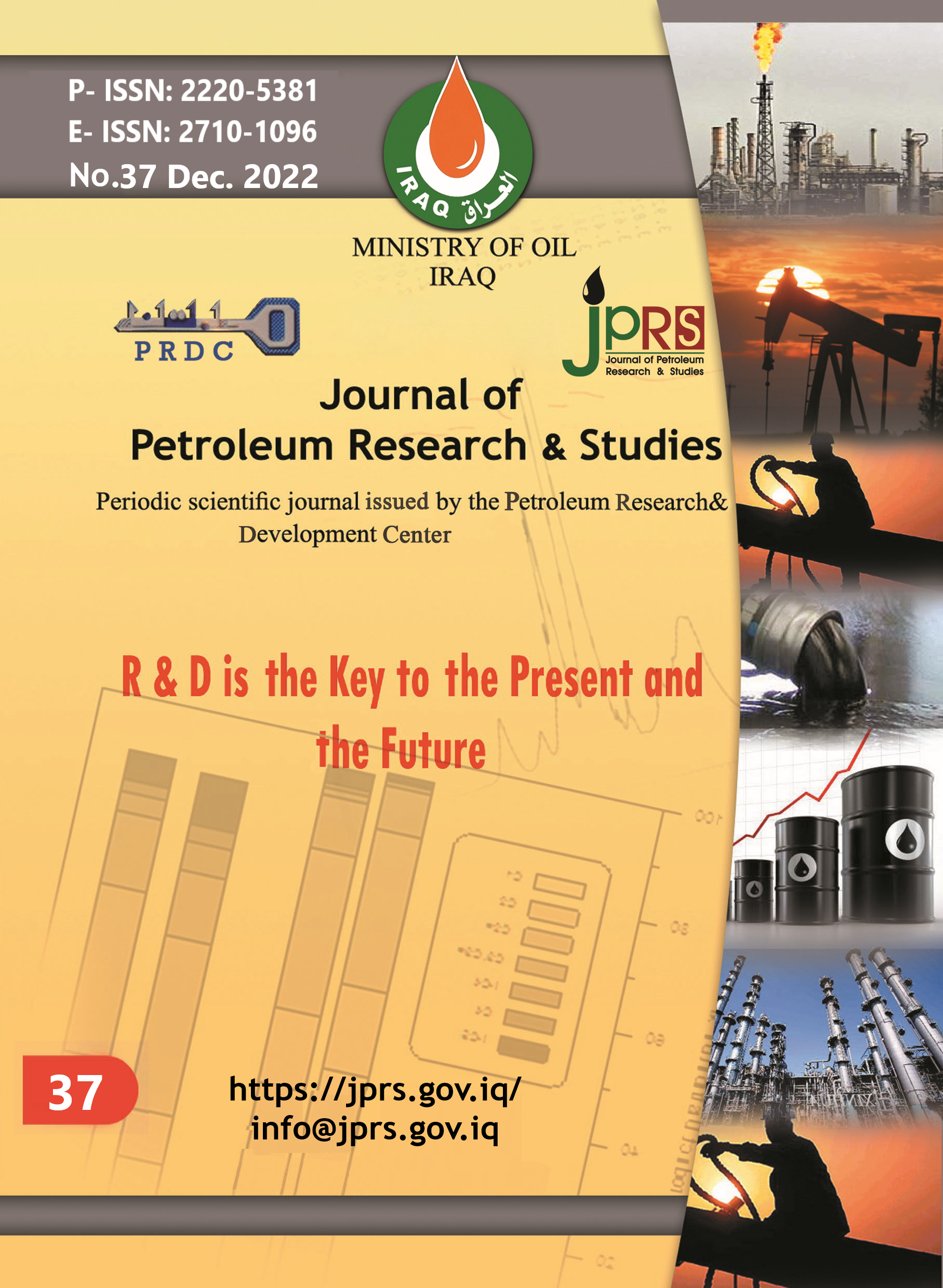Selection of an Optimum Drilling Fluid Model to Enhance Mud Hydraulic System Using Neural Networks in Iraqi Oil Field
DOI:
https://doi.org/10.52716/jprs.v12i4.585Keywords:
rheological properties, hydraulics, pressure losses, drilling mudAbstract
In drilling processes, the rheological properties pointed to the nature of the run-off and the composition of the drilling mud. Drilling mud performance can be assessed for solving the problems of the hole cleaning, fluid management, and hydraulics controls. The rheology factors are typically termed through the following parameters: Yield Point (Yp) and Plastic Viscosity (μp). The relation of (YP/ μp) is used for measuring of levelling for flow. High YP/ μp percentages are responsible for well cuttings transportation through laminar flow. The adequate values of (YP/ μp) are between 0 to 1 for the rheological models which used in drilling. This is what appeared in most of the models that were used in this study. The pressure loss is a gathering of numerous issues for example rheology of mud), flow regime and the well geometry. An artificial neural network (ANN) that used in this effort is an accurate or computational model stimulated by using JMP software. The aim of this study is to find out the effect of rheological models on the hydraulic system and to use the artificial neural network to simulate the parameters that were used as emotional parameters and then find an equation containing the parameters μp, Yp and P Yp/ μp to calculate the pressure losses in a hydraulic system. Data for 7 intermediate casing wells with 12.25" hole size and 95/8" intermediate casing size are taken from the southern Iraq field used for the above purpose. Then compare the result with common equations used to calculate pressure losses in a hydraulic system. Also, we calculate the optimum flow by the maximum impact force method and then offset in Equation obtained by (Joint Marketing Program) JMP software. Finally, the equation that was found to calculate pressure losses instead of using common hydraulic equations with long calculations gave very close results with less calculation.
References
Alaskari, M.K. and Teymoori, R., “International Journal of Engineering, 20: 283-290, 2007.
Azar, J., Drilling Engineering Mechanics. U Tulsa; Tulsa, 1995.
Baranthol C, Alfenore J, Cotterill M, Poux-Guillaume G, “Determination of hydrostatic pressure and dynamic ECD by computer models and field measurements on the directional HPHT well 22130C-13”, In: The SPE/IADC drilling conference, Amsterdam, SPE-29430- MS, 1995.
Bourgoyne Jr, A.T., et al., “Applied drilling engineering”, Volume 2. 1986.
Bloys, B., et al., “Designing and managing drilling fluid”, Oilfield Review, 6(2): p. 33- 43, 1994.
Erhan, S.M., “Starch-lubricant compositions for improved lubricity and fluid loss in water-based drilling muds”, SPE 80213-MS International Symposium on Oilfield Chemistry, Houston, Texas, 2003.
Fernandes, F.A.N. and Lona, L.M.F., "the effect of fluid rheology on hydraulic system" Chem. Eng., 22: 323–330, 2005.
Fruhwirth, R., Thonhauser, G., & Mathis, W., “Hybrid Simulation Using Neural Networks to Predict Drilling Hydraulics in Real Time. Proceedings of SPE Annual Technical Conference and Exhibition, 2006. doi:10.2523/103217-ms.
Alkinani, Husam H., Al-Hameedi, Abo Taleb, Dunn-Norman, Shari, Flori, Ralph E., Alsaba, Mortadha T., and Ahmed S. Amer, "Applications of Artificial Neural Networks in the Petroleum Industry: A Review." Paper presented at the SPE Middle East Oil and Gas Show and Conference, Manama, Bahrain, March 2019.
doi: https://doi.org/10.2118/195072-MS
Ismail, A. R.; Wan Sulaiman, W. R.; Jaafar, M. Z.; Ismail, I.; Sabu Hera, E. In Nanoparticles Performance as Fluid Loss Additives in Water Based Drilling Fluids, Materials Science Forum; Trans Tech Publications, 2016.
Assi, A. H, “The effect of some materials on funnel viscosity Reading in water base mud”, Iraqi Geological Journal, Vol.53, No.1E, PP. 32-43, 2020.
A. H. Assi and A. A. Haiawi, “Enhancing the Rheological Properties of Water-Based Drilling Fluid by Utilizing of Environmentally-Friendly Materials”, Journal of Petroleum Research and Studies, vol. 11, no. 3, pp. 66-81, Sep. 2021.
Downloads
Published
How to Cite
Issue
Section
License
Copyright (c) 2022 Amel H. Assi

This work is licensed under a Creative Commons Attribution 4.0 International License.














